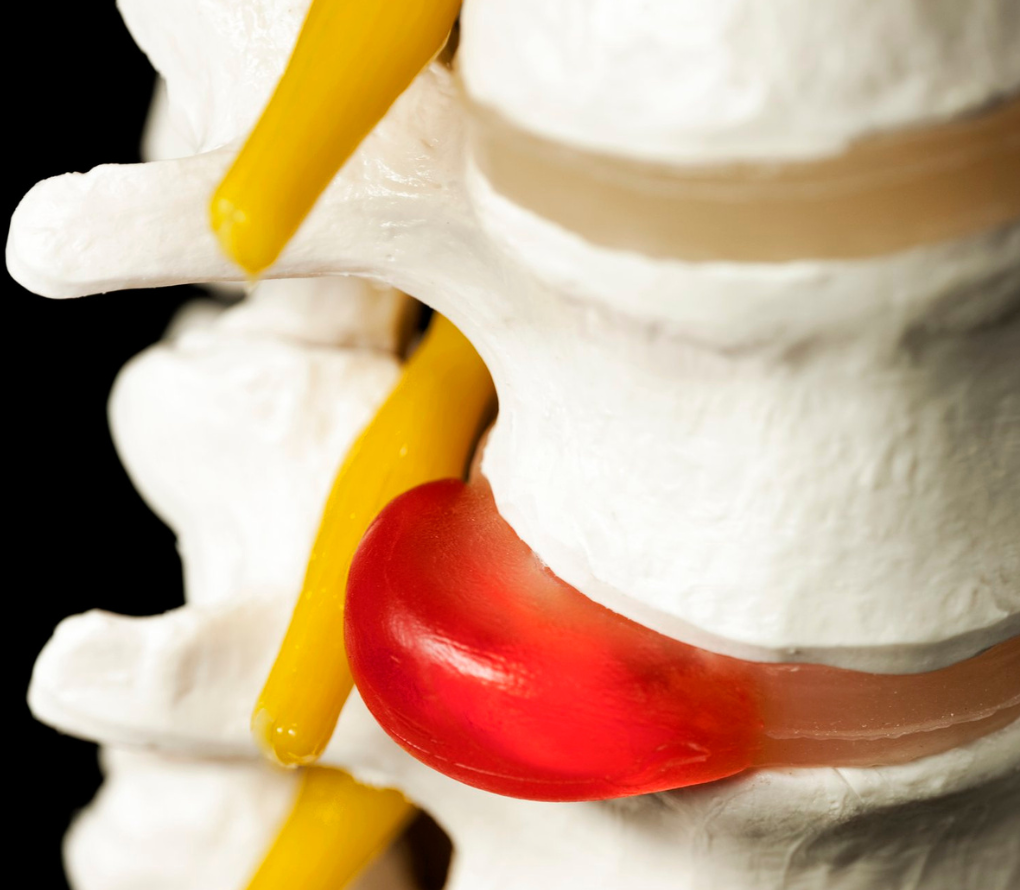Overview
Cervical disc prolapse, also called cervical radiculopathy, happens when one of the soft cushions (discs) between the bones in your neck bulges or slips out of place. This can put pressure on nearby nerves, leading to neck pain, shoulder pain, or arm pain with tingling, numbness, or weakness.
It is a common condition and usually improves with simple, non-surgical treatments. Only a small percentage of patients need surgery.
.
Causes
The condition develops due to:
- Disc degeneration (age-related wear and tear) – The disc loses water content, making it more prone to bulging.
- Disc herniation – Part of the disc pushes out and presses on a nerve root.
- Injury or strain – Sudden lifting, twisting, or trauma may trigger symptoms.
- Posture-related stress – Long hours at computers or mobile use can strain neck discs.
Cervical radiculopathy is not rare. The annual incidence is around 83 cases per 100,000 people, with men slightly more affected than women.
Signs and Symptoms
Patients may notice:
- Neck pain – Often sharp or aching.
- Pain radiating to the shoulder, arm, or hand (commonly called “pinched nerve pain”).
- Tingling or numbness in the arm or fingers.
- Weakness in grip or arm muscles.
- Pain worsens with coughing, sneezing, or neck movement.
In most cases, symptoms improve gradually over weeks to months.
Treatment Options
Conservative (Non-surgical) Care – First Step
Most patients recover without surgery. Options include:
- Medications – Pain relievers, muscle relaxants, or short courses of nerve pain medications.
- Physical therapy – Exercises to strengthen neck muscles, improve posture, and reduce nerve irritation.
- Activity modification – Avoiding heavy lifting, maintaining ergonomic posture at work.
- Cervical traction or supportive collar – Sometimes used short-term for pain relief.
- Injections (epidural steroid injections) – May be offered for severe or persistent pain.
Studies show that over 85% of patients improve within 8–12 weeks of conservative management.
Surgical Options – For Persistent or Severe Cases
Surgery is considered when:
- Symptoms last beyond 2–3 months despite non-surgical care.
- There is significant arm weakness or progressive neurological problems.
Common procedures include:
- Anterior Cervical Discectomy and Fusion (ACDF) – Removal of the damaged disc and fusion of the bones.
- Cervical Artificial Disc Replacement – Replaces the disc while preserving movement.
- Posterior decompression techniques – Sometimes used for multi-level disease.
Surgical success rates are high, with 80–90% of patients reporting major relief from arm pain
Frequently Asked Questions
No. Most people recover well with conservative treatment. Surgery is required only in a minority of cases with severe or persistent symptoms.
👉 Many patients feel better in 6–12 weeks, but complete recovery may take a few months. Regular exercises and posture correction help speed recovery.
Yes. A “slipped disc” is a common term for disc herniation, where part of the disc bulges or protrudes.
In most cases, yes. Light activities and gentle exercises are encouraged. Avoid heavy lifting or sudden jerky neck movements until symptoms improve.
Seek medical attention if you develop:
- Sudden weakness in the arms or hands.
- Loss of balance or coordination.
- Difficulty controlling bladder or bowel movements.
These could indicate more serious nerve or spinal cord involvement.
Book Now
Consult our experts today

